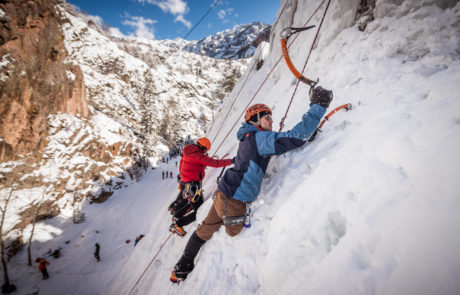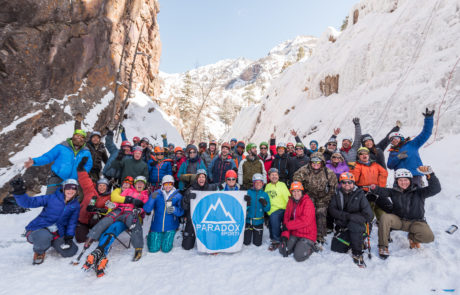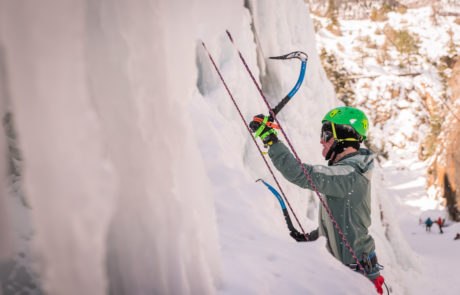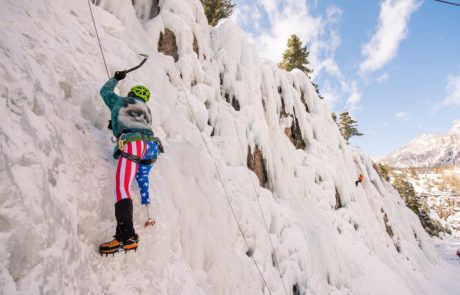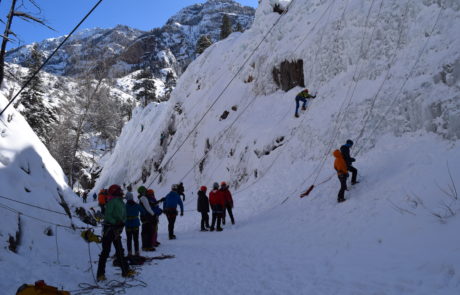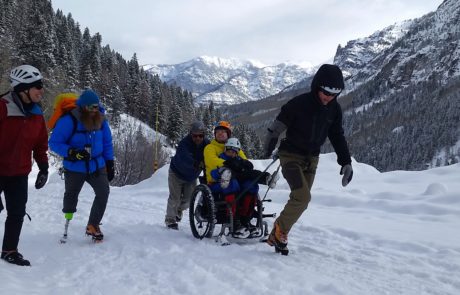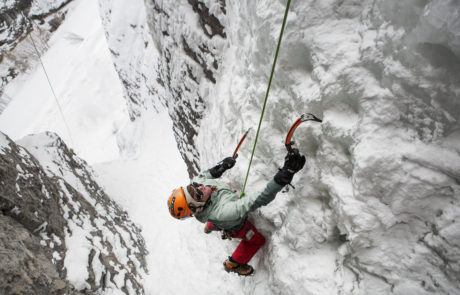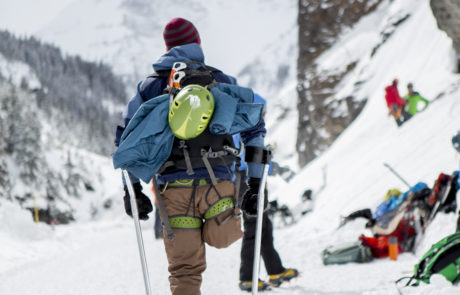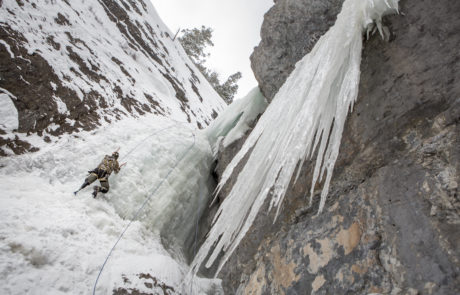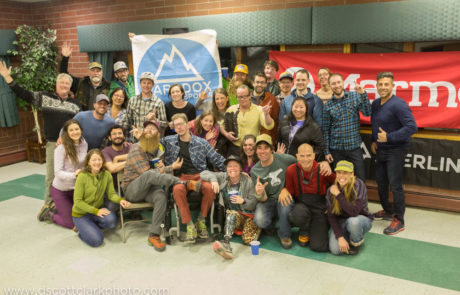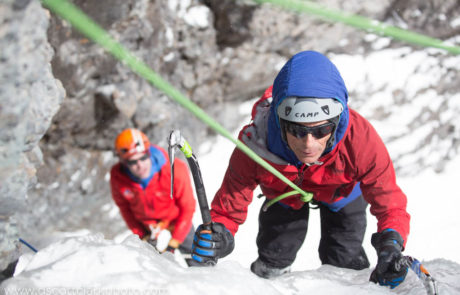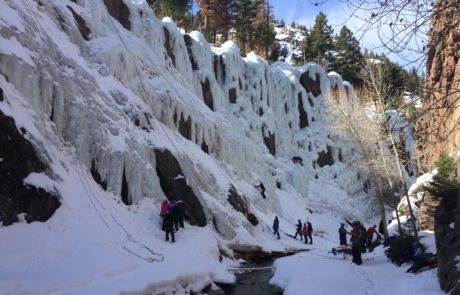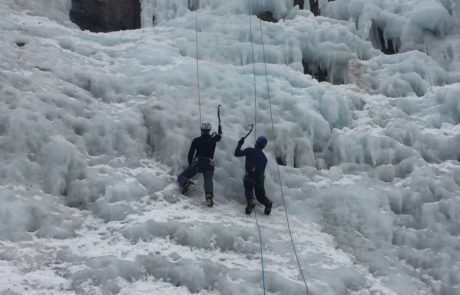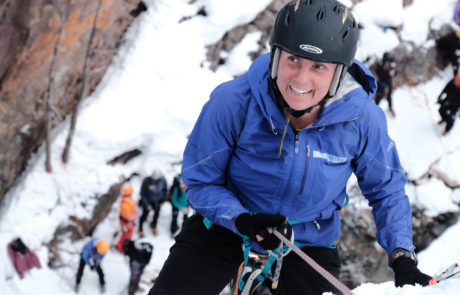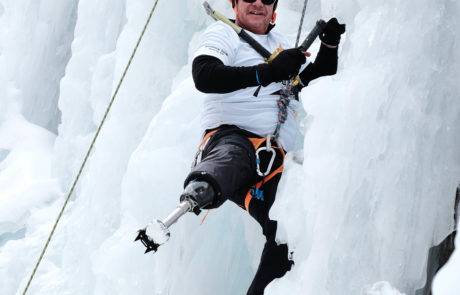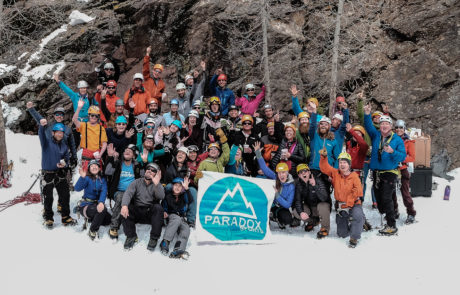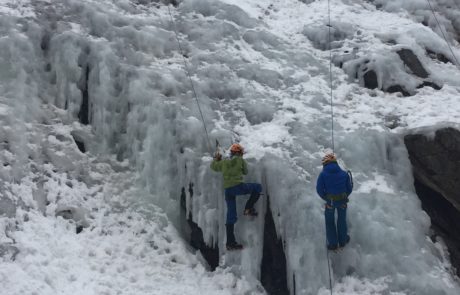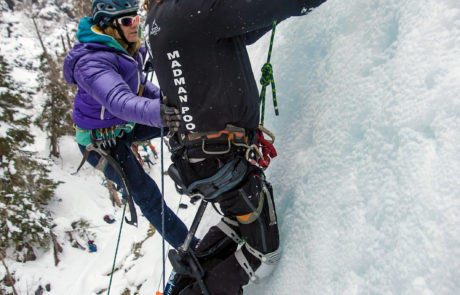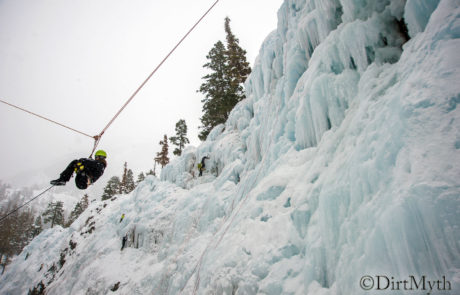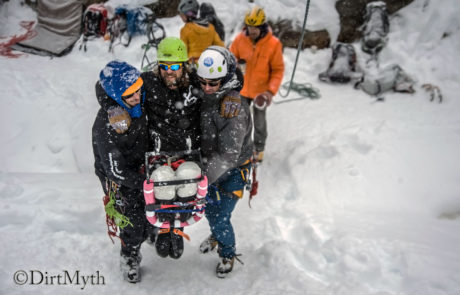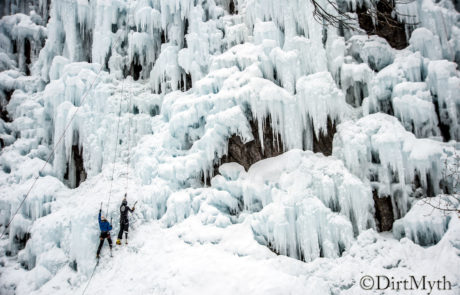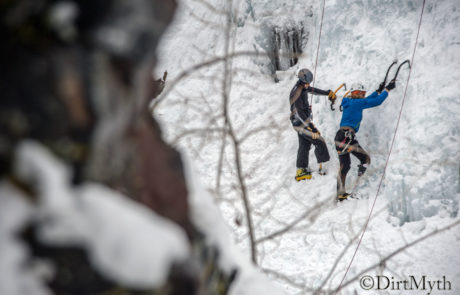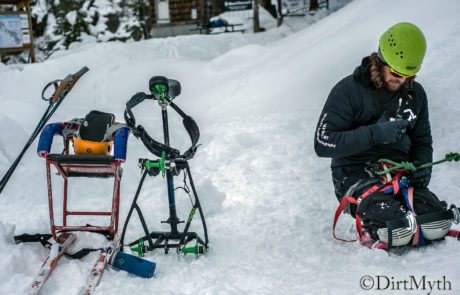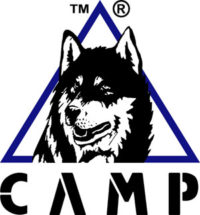
Ice Climbing Packing List
As any mountaineer will tell you, finding the right layers and gear is an ongoing and developing process, especially with new technology and personal preferences. Each person’s needs are unique, and many factors add to decisions about what you should wear (weather being a primary consideration!). If you do not have some of these items, you can indicate so on your registration, and we’ve got you covered! We expect that you will be dressed and ready to go for the meeting time to head to the climbs on the first day – so let us know of any questions during the welcome night (or prior to the trip!).
Here are some example items of what to pack:
CLOTHING
Clothing is as important as your boots and ice axe. Being properly dressed is essential to enjoying your outdoor adventures. One key rule: try to use synthetic fabrics or wool for all layers. No cotton! Cotton keeps you cold if you sweat and it takes a long time to dry out, while wicking fabrics help you regulate your core temperature and avoid overheating or chilling. Layering will give you more versatility, depending on the weather and your activity level.
- Base Layer: Top and Bottom. Light to mid-weight synthetics, snug fit and close to skin.
- Socks: Wool or wool blend socks are great natural insulators, even when wet. Make sure you fit footwear with heavier socks for more warmth. Footwear that constricts your foot will constrict your blood flow and cause your feet to be cold.
- Mid Layer: add mild insulation to help retain heat that your body creates, and are worn between the base layer and insulation if needed. Power-Stretch and micro-fleece such as Polartec are ideal materials for this layer.
- Insulating Layer: Examples of insulating jackets includes a thin down sweater or vest, synthetic jacket, heavy fleece, or softshell.
- Waterproof and Breathable Shell: Outerwear (jacket and pants) that is waterproof with increased breathability will be more adaptable and can help transfer moisture away from your body to keep you dry and protected from the elements. Jacket MUST have an integrated hood. Flimsy “stow-away” nylon hoods are not adequate. Full side zip pants are helpful.
- Down or Primaloft Jacket: This layer is put on when you stop for a break. A big, warm, “puffy” jacket (hood recommended) worn over all layers to keep you warm between climbs.
- Gloves or Mittens: Pack at least two pairs. One pair of thinner gloves is used for climbing when your hands are not cold and need to be dexterous. One pair of mittens or warm ski gloves are worn when your hands are cold and don’t need to be dexterous. It’s hard to have too many extra gloves when ice climbing! We will also have hand warmers available.
- Warm Hat: This hat should cover your ears and can be made of fleece or wool, without a pom pom or bulk. Remember to fit the hat so you can wear it under a helmet.
- Balaclava or “Buff”: When the temperatures drop and the wind picks up, the skin on your face becomes very vulnerable to frost nip, and even worse, frostbite. Wearing a thin layer over your neck, chin and cheeks adds protection and warmth to your clothing system.
GEAR
- Personal Hydration System: Wide-mouth water bottles are recommended for winter. Please avoid hydration systems (hoses) or disposable bottles, as they tend to freeze easily.
- Eyewear: Protect your eyes from the sun and flying ice.
- Backpack: large enough to hold all your gear without strapping extra gear to the side. It’s nice to have a pack that carries ice axes easily and that has a hip belt to help support the weight.
- Gaiters: Gaiters cover the top of the boot to keep out rain, snow, and ice, and make you less likely to trip on loose pant legs and damage them while walking and climbing in your crampons.
- Climbing Helmet: required!
- Harness: Any rock climbing harness works for ice climbing.
- Any adaptive equipment or systems you use for climbing. For example, crampon feet! We will also have some prosthetics available for you to use.
- Ice Climbing Boots: Warm and either plastic, synthetic or leather, with toe and heel bales for crampon attachment. Paradox Sports will provide these if you indicate on your registration that you needed them.
- Crampons: Front point style, step-in crampons, ideal for technical ice climbing.
- Ice Tools: If you have them, bring them! If you don’t, don’t worry! We will provide them.
MISCELLANEOUS ITEMS:
- Personal hygiene products, toiletries
- Sunscreen, sunglasses, lip balm and hat for sun protection
- Medications
- Camera – light, point and shoot or phone recommended
- Phone chargers
- Travel Mug for hot beverages
- Camp chair for at crag or at camp
- Toe Warmers for in your boots if you are prone to cold feet
- Swimsuit – sometimes there are options for hot tub or hot springs post ice climbing
- Snacks and Food: All meals are provided, and we will have some snacks and bars available. However, you may want to consider bringing some snacks of your own, especially if you have dietary constraints.








